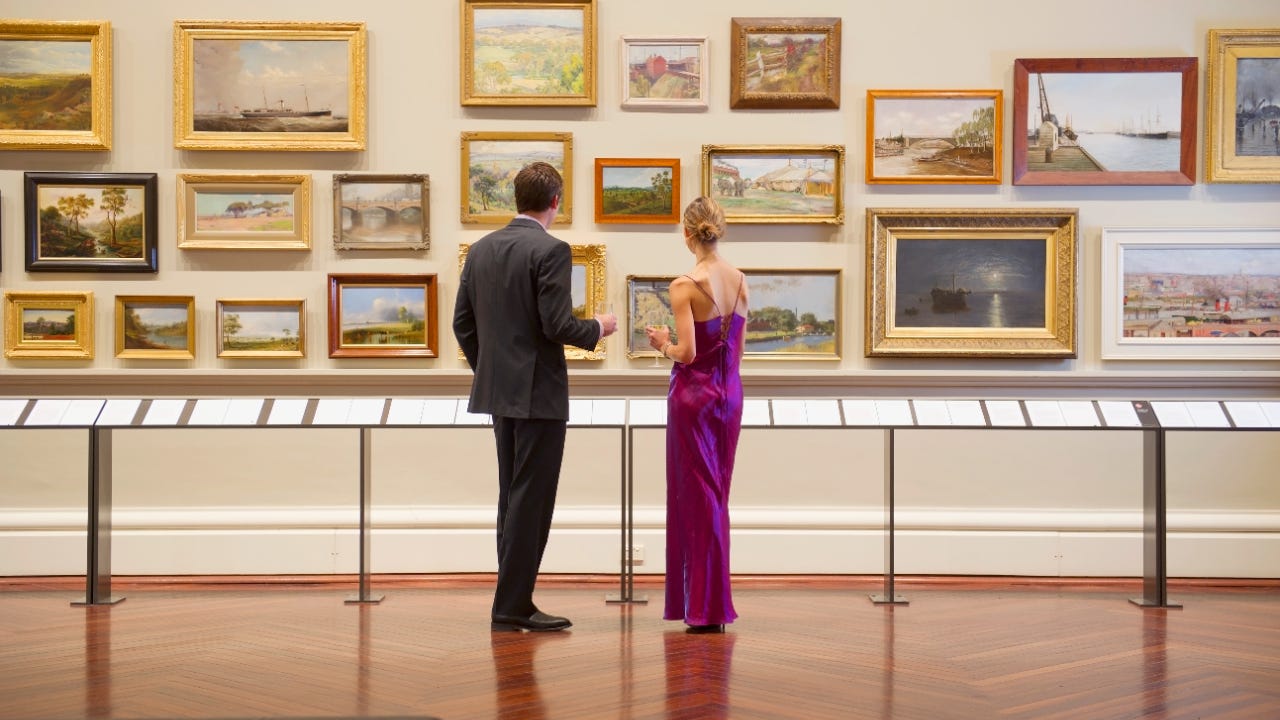How to invest in art

The value of art tends to not move in line with the stock market, and as such can serve to diversify an investor’s portfolio. Investing in art can offer various benefits to a portfolio, but it comes with inherent risks to be aware of before diving in.
In the past, art could only be purchased at physical auctions or directly from the artist or owner themselves. Now there are a myriad of ways to invest. There is the classic way to invest, which involves purchasing a physical work of art such as a painting or sculpture. Further, there are ways of owning a fractional piece of the full work of art, be it in a digital or physical capacity.
Before getting started, investors should decide which route, if any, is best for them. Physical art, of course, takes up space and might require more commitment than digital versions, but can also produce higher returns if selected correctly. Art is considered an alternative investment, and investing in these kinds of assets can often require different methods than investing in stocks and bonds.
How to start investing in art
There are several different routes an investor can take to invest in art, whether it’s physical or digital.
- Physical: The classic approach is to invest in physical art. This can be done through galleries and auction houses (think Christie’s or Sotheby’s, two traditional auction companies) both in-person and online. Here you find a piece of art you believe is a worthwhile investment and purchase the entire thing outright.
- Digital/NFTs: Non-fungible tokens, or NFTs, are a way to digitally invest in a piece of art and have documentation of ownership through a secure blockchain. Purchasing an NFT allows you to own a piece of digital art, but an NFT can be anything really — from a piece of art to a song or even a written work. Art is not necessarily a painting or picture, and NFTs allow for investors to own a wide range of digital art assets without ever physically coming into contact with them. They can then be traded and sold on the open market.
- Marketplace sites: Sites like Masterworks allow for the purchase of fractional shares of art. This is perfect for investors who want to get their feet wet but is not ready for the commitment of purchasing an entire piece just yet. The company purchases the artwork, securitizes it (allowing just about anyone to invest), and then sells it when they feel the time is right. Investors can realize a return once the piece is sold. Masterworks also offers a secondary market platform in an effort to provide liquidity to buying and selling artwork, similar to how NFTs are bought and sold (minus the blockchain.) Investors can also buy and trade shares like they would with other tradable assets.
- Stocks, ETFs and mutual funds: There are no classic stocks or ETFs and mutual funds for art, but there are art equity focused funds, like that of a company called Yieldstreet. Through their Art Equity Fund II, for example, investors can invest in a portfolio of 10-20 artworks. This particular one focuses on artists who have been influenced by the art in Harlem, New York. Art equity funds operate much like regular equity funds in that they have a fund manager and charge a management fee, but investors will need to wait until (and if) the pieces are sold in order to realize a return.
Is art a good investment?
A recent report by Citibank showed that from 1985-2018, returns from the art market have been about the same as those of high-yield bonds, outperforming both developed and emerging market equities.
Art, in short, has outperformed other asset classes, but has also suffered substantial periods of volatility. Citi also highlights that contemporary art declined a whopping 56.8 percent during the early 1990s recession and declined about 28.5 percent during the Great Recession in 2008. During the COVID-19 pandemic, the market remained a little more resilient, likely because market turmoil was short-lived and was followed by a stock market boom.
As it is subjective in nature, whether or not to consider art a good investment truly depends on how you view it. The return on the piece can only be realized after one sells it, and this is entirely dependent on other people’s views. More traditional investments, like stocks, have teams of analysts at different companies throughout the open market that research a company’s worth and assign value to that particular asset, meaning that a stock’s value is more objective.
Investors then have an array of educational tools by which to inform their investment decisions. With art, the same level of information is not available. There have been recent developments like the All Art Index, which was created to track the sales of top-ranking artists throughout the world, but it is not the same objective process as the research-backed analysis for publicly traded stocks.
Risks of art investing
- Illiquid: If you purchase a physical work of art, selling it might be difficult or impossible depending on demand for that product. You might then have money tied up in an asset that cannot be offloaded easily.
- Not publicly traded: Art is an alternative asset that is not traded on a public exchange, meaning it is really up to the investor to educate themselves on their investment decisions.
- Fickle demand: Art, unlike a utilities company, for example, can be seen as a luxury as well as subjective. While you will always need electricity, you might not always need art. Tack on the swings of popularity, and demand for art can create volatility in an already speculative asset.
- Lack of specialized knowledge: While most investors do not have specialized knowledge about every stock in their portfolio, there is at least a volume of public scrutiny and teams of analysts that supply it for them. The art world is not the same, and until recently was fairly closed off to most investors. Art in particular requires specialized knowledge. This can expose investors to higher risk, where they could more easily get taken advantage of.
Is art investing right for you?
As with all investments, it depends on where you currently stand and what your goals are. If you are an investor just starting out, do not have a significant emergency fund on hand, and have not already teed up your retirement accounts with a regular contribution, then art might be a better investment option at a later time.
If you are an investor who has their long-term retirement and savings goals already secured and are seeking an alternative asset to diversify your portfolio with, getting started in art equity funds or even a fractionalized interest in art might be a good option.
Bottom line
Art has outperformed several asset classes in the last thirty years and could be a good addition to an investor’s portfolio, but it comes with several inherent and unique risks. Art in the physical form is illiquid and can be incredibly risky if you do not know what you’re doing.
Art can also be incredibly expensive, and a bad choice might leave you with a bulky work of art you are not able to offload. Investing in digital forms of art is something new and allows for convenience, but can also be plagued by the volatility and fickleness that has characterized the art market for decades.






